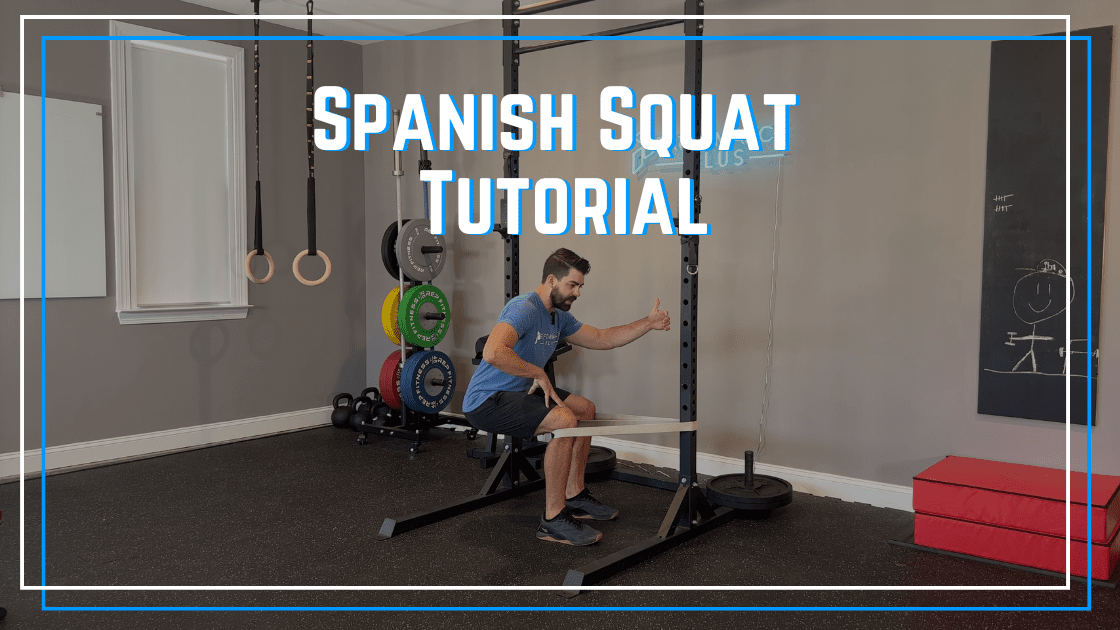How to Perform the Spanish Squat
So I’ve got a large resistance band, and I’m going to wrap that around a squat rack upright. You can also use more like nylon towing straps as a bit stiffer of an option, but I get that band positioned directly behind my knees and around the rig at knee height and then I’m going to stand upright with a little bit of band tension on board, and then I’m going to lean back. And what you should feel is at the top of that motion, as you lean back, you should already feel quad muscle activation turning on.
Then we’re going to go into the eccentric squat portion, but we’re not going to do our typical squat where we allow our knees to come forward. We’re going to really emphasize the sitting back and keeping shins vertical. So when you’re looking at me from the side, I almost want to see a vertical shin and a near vertical torso. This squat position would not be sustainable if we weren’t leaning back into the bands, but you’ll feel quad tension down here at the bottom still. Typically, athletes only squat down with this variation until about 90 degrees of knee flexion.
As you stand up and go to this lean back standing position, you’ll feel that quad tension maintained throughout the entire squat. And that’s going to not let your quads ever get a moment’s rest and that was what makes the Spanish Squat such a brutal exercise for quad development and building squat strength, even for those with knee pain.
If you need to make this a little harder, you can go with an added weight and hold a kettlebell or a dumbbell in a goblet position to load that up and make it more challenging for yourself.
More Quad Strength Resources:
- Our Bulletproof Quads program is a 3 day per week accessory plan for athletes needing to build more quad strength
- For more quad strength exercise variations, see this article for more great quad accessory moves like Goblet Squat 1.5s, Belt Squats, and Sissy Squats.
- Also check out this article on different squat variations to target you trouble areas.
- Related Podcast: Diagnosing your squat weaknesses on the Performance Plus podcast






